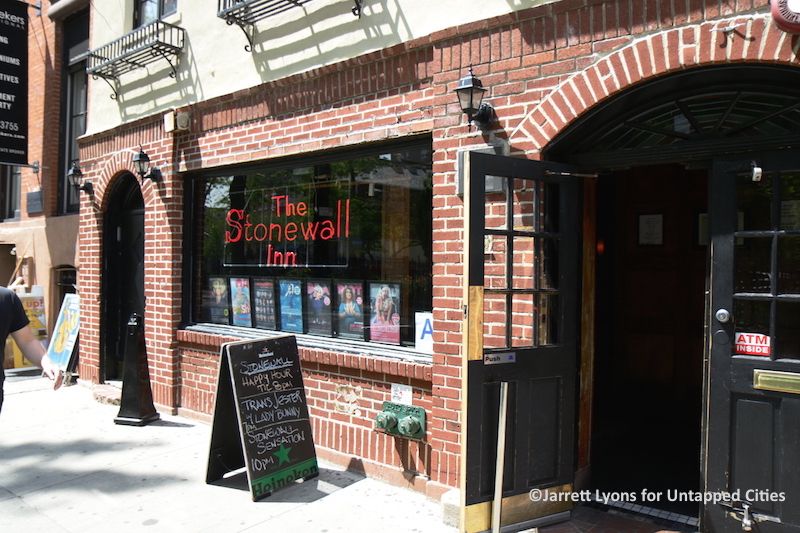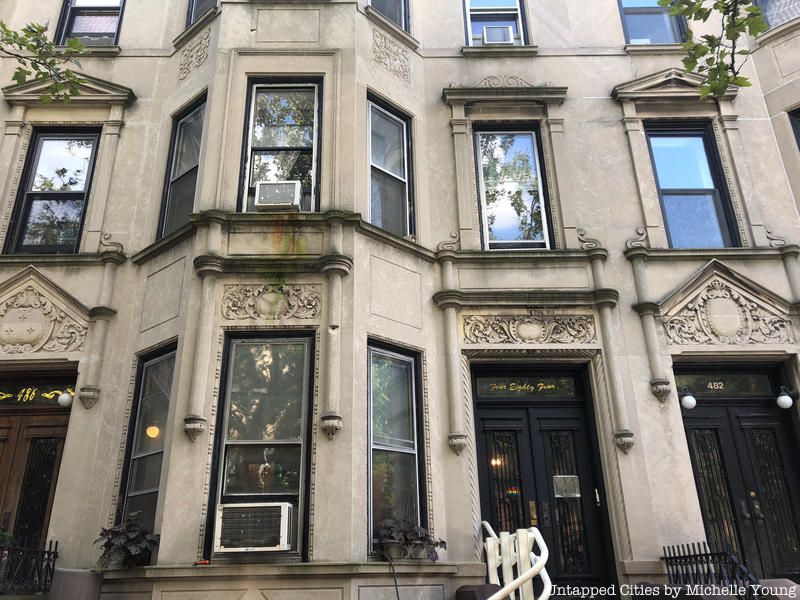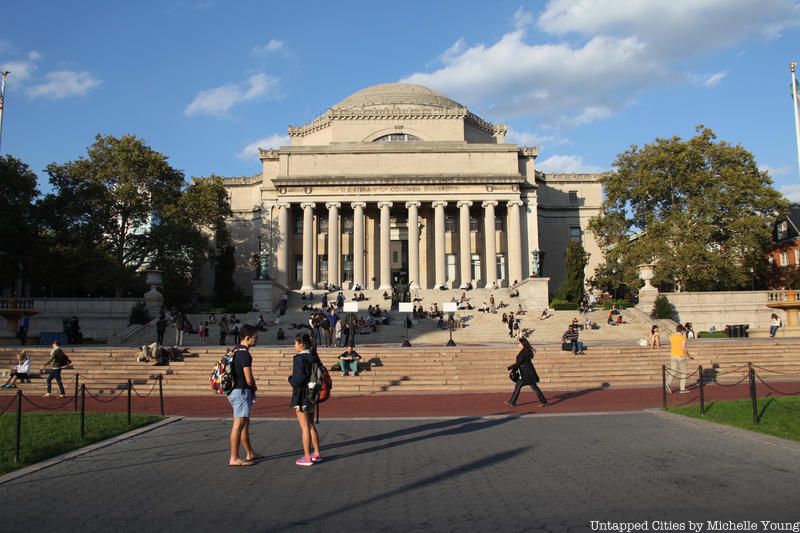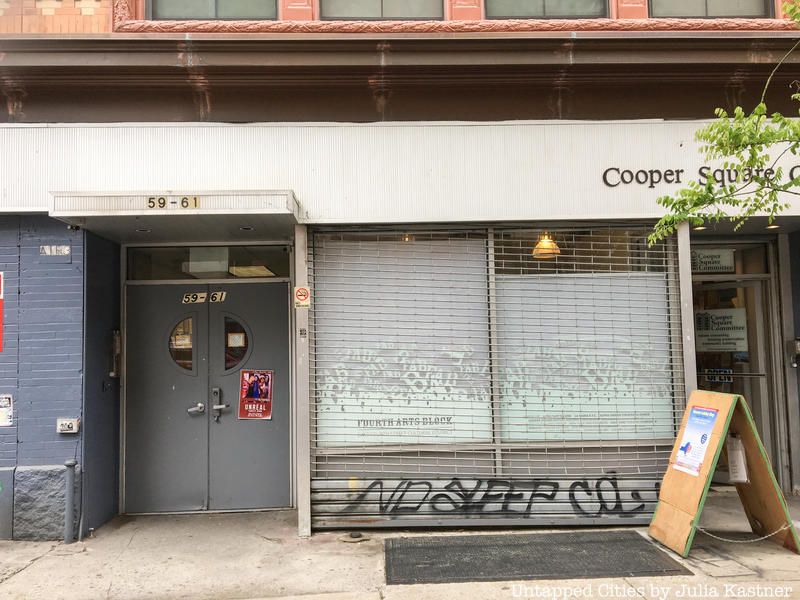NYC’s Forgotten ‘War on Christmas Trees’
Discover how an obscure holiday crackdown affects festive street vendors today!


New York City is rooted in LGBTQ history, and as such, there are over a hundred sites in the city relevant to the movement. For over two years, historic preservationists have been hard at work researching and finding historic LGBTQ sites that were important to the history and culture of the movement. The project is being funded by the National Parks Service and includes an interactive map where people can hover over different areas to see the name of the location, the significance, and click on it for more info. In a city so filled with LGBT history, the number of sites related to the LGBT movement is almost unending and continues to be added to with each new historic revelation that is found. The New York City LGBT Historic Sites Project aims to keep uncovering LGBT history and making it available for the community to visit. Here are ten of the notable historic LGBTQ sites in NYC from the NYC LGBT Historic Sites Project.

Photo courtesy Alice Austen House by Floto + Warner, Clear Comfort, 2015, © Floto + Warner
Alice Austen, born in 1866, paved the way for LGBT photography as much of her work featured women in drag and other provocative images that defied gender roles and shook the norm of the time period. She lived in the Hylan Boulevard, Staten Island house when she was a child and later moved back in with her partner, Gertrude Tate, in 1917.
The Alice Austen House was built in the 1700s and includes the ornament additions that were put in by John Austen when he bought the house. Alice had a darkroom in her closet and became one of the first well-known female photographers. Alice and Gertrude faced financial problems and attempted to make money by adding a tea room in their house which ultimately failed and the couple was evicted in 1945.
Clear Comfort almost faced demolition but Berenice Abbot and Philip Johnson, historic preservationists, worked hard to preserve the house and their attempts led to the house being made into a museum. The Alice Austen House was designated as a national site of lesbian, gay, bisexual, transgender, and queer history on June 2oth. The Alice Austen House is only the 14th site in the United States to be given this title despite more than 92,000 sites appearing on the National Register. It’s the first site of its kind that’s centered on a visual artist.

The Oscar Wilde Memorial Bookshop opened in 1967 when Craig Rodwell, gay right’s activist, wanted to create a place where the LGBT community could celebrate their literary history and somewhere that the community could gather to plan events like the first pride parade which was then referred to as “The Christopher Street Liberation Day March.”
Rodwell originally proposed the idea to the Mattachine Society, the gay rights group he took part in, but his idea was shot down and he was determined to make his dream a reality. He eventually opened the bookshop in his apartment building on Mercer Street and in 1973 he moved it to its location on Christopher Street. He ran the bookshop until he sold it in 1993 and the store was open until 2009. The building is still standing and remains an important fixture in the history of the LGBTQ movement.

The Stonewall Inn is one of the most well-known sites of the LGBTQ Movement. It was at this location, on Christopher Street, that the movement for equality really took off. The gay bar in Greenwich Villiage was raided in 1969 for serving alcohol without a liquor license. It was not uncommon for the police to single out and target gay clubs and patrons were having enough of this.
The police were hostile to the LGBT people in the bar as they arrested 29 employees and patrons from June 27th to June 29th. While the event sparked the revolution that seemed to place white gay men at the forefront of the movement, two trans women of color, Sylvia Rivera and Marsha P. Johnson are cited as being two of the first people to fight back and start the riots. The Stonewall Inn continues to be a staple for the New York City LGBTQ community and Google recently donated one million dollars to preserve the history and the legacy of the Stonewall Inn.

With a delightful play on words, the Lesbian Herstory Archives, on 14th Street in Brooklyn, aims to preserve lesbian history in New York City. The archives began when Julia Stanley and Joan Nestle wanted a space for lesbians apart from the Gay Academic Union, because they were frustrated that their history was mostly told through the lenses of men.
In 1974, a group of lesbians began meeting to flesh out the idea of preserving their history on their own and the first archives were housed at Joan Nestle’s apartment on 92nd Street in Manhattan where they stayed for fifteen years. The women were intent on running the endeavor on their own without government funding while still keeping everything free for interested people. In 1992, the group bought the current Lesbian Herstory Archives building in Park Slope, Brooklyn after a significant amount of fundraising. The building officially opened to the public in 1993 and contains books, event memorabilia, photos, films, diaries, and anything pertaining to the history of lesbian women and their stories.

Green-Wood Cemetery, founded in 1832 and located on 25th Street in Brooklyn, is the grave site to a slew of prominent figures from New York City. Many people involved in the LGBT Rights Movement and other historical figures who identified as gay or remained closeted during their lives have been laid to rest in the cemetery.

In 2016, Green-Wood Cemetary partnered with the NYC LGBT Historic Sites Project to honor the LGBT figures laid to rest in the cemetery by placing rainbow flags on their graves. As an ode to the practice of placing American flags on soldiers’ graves for Memorial Day, rainbow flags adorn the graves of LGBT figures to honor them during Pride Month. Richard Moyland stated, “This year, the presence of rainbow flags will be a visible and constant reminder to all that our world is richer because of them.” The cemetery also has an annual gay trolly tour of Greenwich Villiage, which occurred from June 8th to the 13th. Known LGBTQ graves include Leonard Bernstein and Richard Isay among others.
US: Women’s Liberation March – 1971
Whenever a Women’s March is mentioned now, people often think back to the recent 2017 Women’s March on Washington. However, marching for women’s rights is not a new concept and many of the rights women have today are the result of multiple generations of women standing up for what they believe in. A group of such women was located in New York City.
The Women’s Liberation Center opened in in 1972 on West 20th Street, Manhattan so groups of women, especially groups geared toward lesbians, could have a place to meet. The building remained open until 1987. The Lesbian Feminist Liberation group, which had formerly been a subset of the Gay Activists Alliance, used the building for meetings. The group held many demonstrations and marches and fought against the portrayal of women as subservient to men.
Also located in the center was a lesbian switchboard that served as a hotline to provide information, advice, and counseling to lesbian women which later moved to the LGBT Community Center until 1997.

Robert Martin, under the fake name Stephen Donaldson, created the first gay club in the United States at Columbia University in 1966. The college previously had strict and harmful policies that allowed students to be kicked out of the school or sent to a psychiatrist for being gay. Columbia’s Student Homophile League resulted in a lot of backlash but the group had the support of Columbia’s chaplain, Reverand John Cannon, which ultimately led to the success of the club.
The club was officially approved in 1967 and Donaldson worked hard to promote it in any public outlet he could including radio, newspapers, and posters. Donaldson’s efforts led to the creation of over 150 other LGBT college groups in the U.S. over the following four years. When the school denied the group a gay lounge in 1971, the Homophile League took it upon themselves to create one in the basement until it was finally recognized by the college as the Stephen Donaldson Lounge and is still used today.

The New York Stock Exchange isn’t generally at the top of most people’s mind when thinking of LGTB sites in New York City, but the Wall Street Stock Exchange was the site of two major AIDS protests in 1989. New York City’s history with AIDS is a tumultuous one that resulted in countless deaths before it was taken seriously by anyone in government positions and even the LGBT community.
The protests at the New York Stock Exchange were organized by the AIDS activist group, ACT UP, to protest Burroughs Wellcome, the pharmacy that put an unreasonably high price tag on their AIDS medicine, AZT. The expense of the drug was too high for most people with AIDS to afford and resulted in a lot of unnecessary pain and suffering for those unable to pay for it.
When the government refused to take AIDS seriously, Larry Kramer spoke out in an empowering speech in 1987 and ACT UP, The Aids Coalition to Unleash Power, was created shortly after. Their motto was “Science = Death.”
In addition to the protest, Peter Staley, Lee Arsensault, Greg Bordowitz, Scott Robbe, James McGrath, and two photographers broke into the Stock Exchange, chaining themselves to the VIP balcony as they dropped fake money and interrupted the first bell for the first time in the building’s history. The protest was successful and the price of the drug was lowered only four days later.

23 Beekman Place, Manhattan was home to Katherine Cornell and Guthrie McClintic, who were one of the most well-known Broadway participants in a “lavender marriage,” which was a term used to describe a marriage where one or both partners in the marriage were gay. Katherine Cornell is often referred to as “the first lady of theater” and Guthrie McClintic was a director and producer. The “couple” lived on separate floors of their townhouse.
Paul Rudolph purchased the building in 1976 converted the building into apartments and created a sculptural penthouse. In a mostly straight-dominated field, Paul Rudolph was a huge contribution the LGBT community as an innovative, gay architect.

When people think of gay history in New York City, theater and Broadway are generally at the top of their minds. The WOW Cafe Theatre, short for the Women’s One World Cafe Theatre, claims to be “the oldest collectively-run performance space for women and/or trans artists in the known universe.” The theater began as an International Women’s Theater Festival featuring eight countries and over thirty shows that performed for New York City’s lesbian scene. The festival was such a hit that the group found a permanent space on 11th Street where women and transgendered people performed during the whole year.
The theater moved once more to 4th Street, where it resides in East Village today and serves as one of the most prominent lesbian theaters in the city. Notable women that have been involved with the theater include Peggy Shaw, Lois Weaver, Deb Margolin, and Carmelita Tropicana. The theater aims to combat oppression and opens up performers with different sexual orientations, races, religions, ages, sizes, and disabilities.
In a city so filled with LGBT history, the number of sites related to the LGBT movement is almost unending and continues to be added to with each new historic revelation that is found. The culture of the LGBT community can be felt in hundreds, if not thousands of buildings in New York City and the New York City LGBT Historic Sites Project aims to keep uncovering LGBT history and making it available for the community to visit.
Next, check out 10 Influential Figures of NYC’s LGBTQ Rights Movement and 10 Notable LGBT Landmarks and sites in NYC. Get in touch with the author @LitByLiterature.
Subscribe to our newsletter